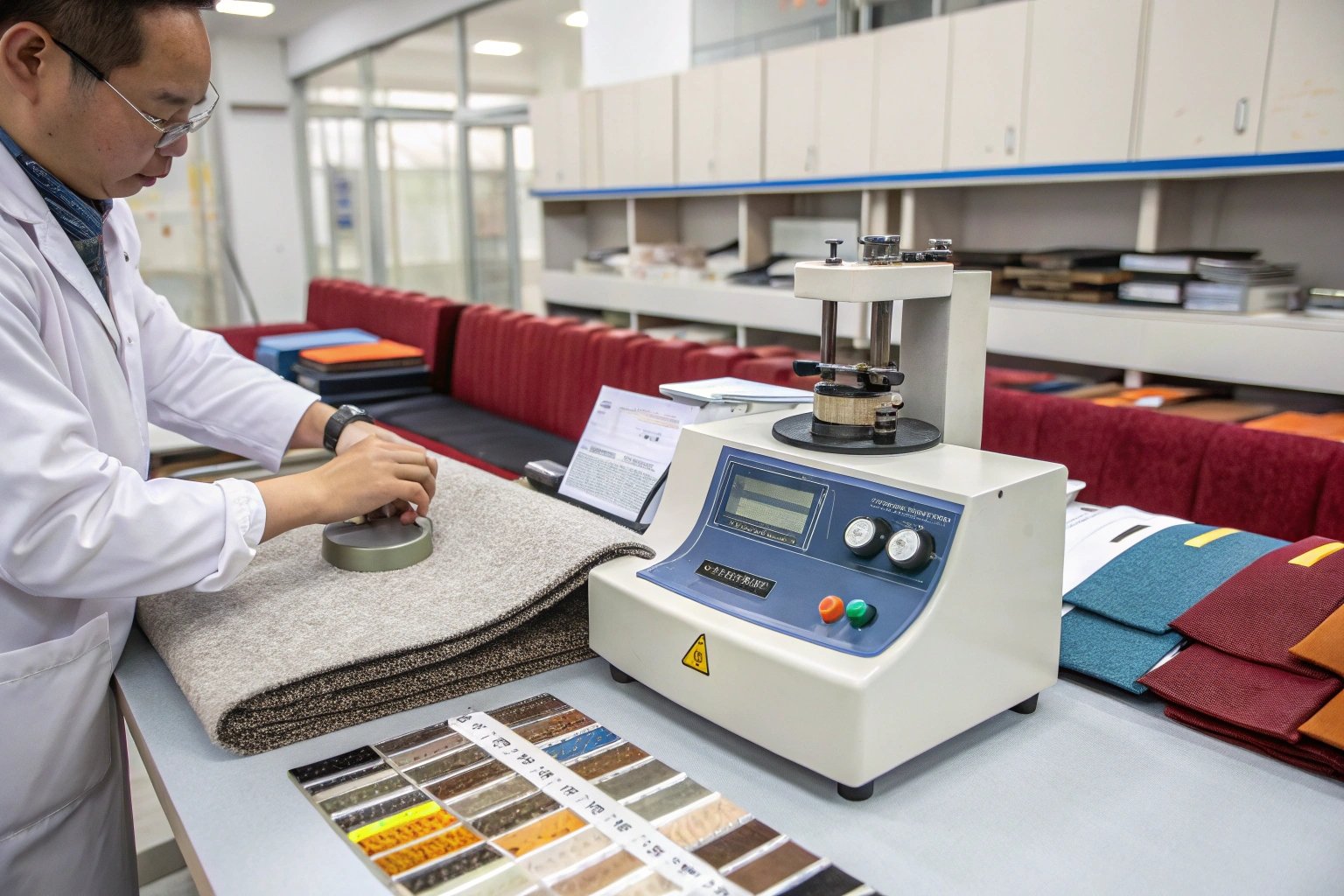When choosing upholstery fabrics for furniture, durability isn't just a desirable feature—it’s essential. Whether you're furnishing high-traffic commercial spaces or long-lasting home interiors, you need materials that can withstand daily wear. That’s where Martindale testing becomes a non-negotiable standard.
Martindale testing is the industry benchmark for evaluating the abrasion resistance of upholstery fabrics, helping manufacturers and buyers choose materials based on their real-world endurance and application.
This test doesn't just measure fabric strength—it determines the lifespan and suitability of textiles for everything from office chairs to hotel sofas. In this article, we’ll break down why it matters, how to interpret results, and where to find reliable Martindale-tested fabrics.
What Is Martindale Abrasion Testing?
Understanding the science behind Martindale testing will help you grasp why it holds so much weight in upholstery and contract furniture industries.
Martindale testing measures how many rubs (cycles) a fabric can endure before showing noticeable wear, using a mechanical device that simulates abrasion through repetitive motion.
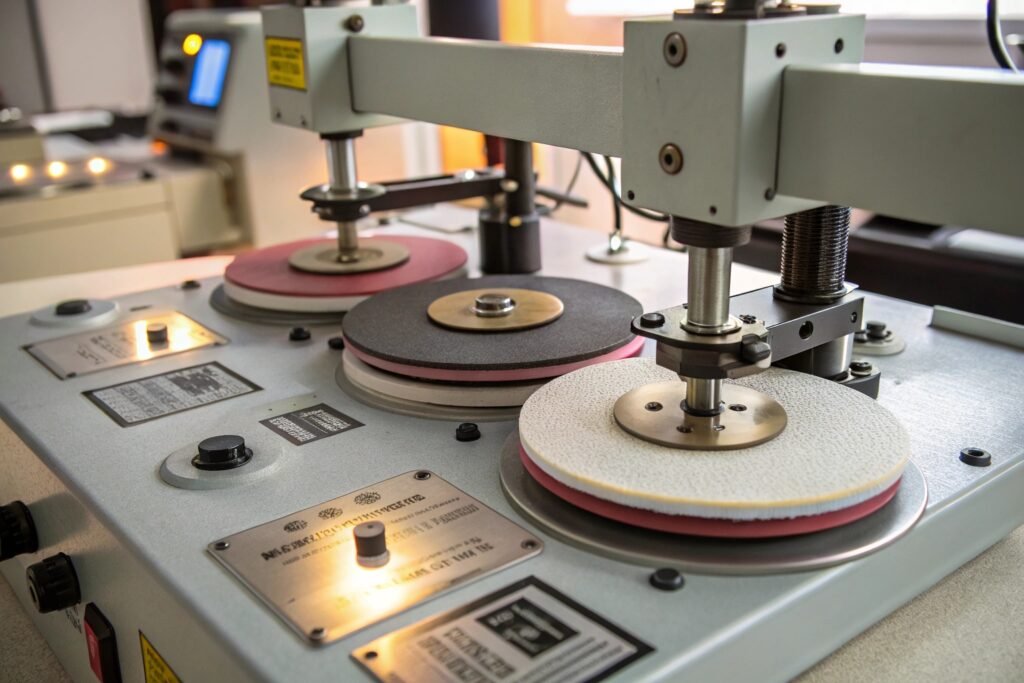
How Does a Martindale Tester Work?
The Martindale machine uses circular disks with standardized fabric or abrasive material that rubs against the test sample under controlled pressure. The rubbing mimics daily contact with clothing, body weight, or objects like bags and elbows.
To see it in action, check out this video demonstration of the Martindale tester in a textile lab.
What Does the “Cycle Count” Actually Measure?
The result of the test is expressed in rubs or cycles. For example:
- 10,000 cycles: Decorative use only
- 25,000 cycles: Residential upholstery
- 40,000+ cycles: Commercial seating
These thresholds are standardized in ISO 12947 and can be referenced on the Intertek Martindale Testing page.
How Do Martindale Ratings Influence Fabric Selection?
Different applications demand different abrasion tolerances. Martindale scores help specifiers and buyers make the right match.
Martindale scores act as a guide for choosing fabrics suitable for low-, medium-, or high-use environments—from occasional chairs to airport lounges.
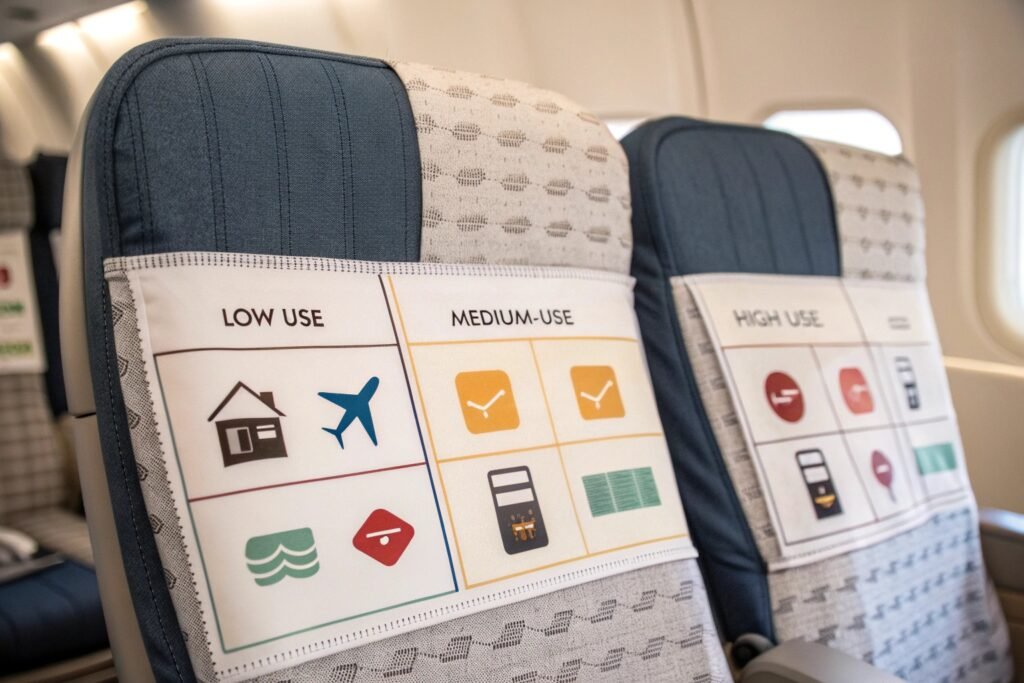
What Martindale Score Should You Aim For?
Here’s a simple breakdown:
| Martindale Rubs | Recommended Use |
|---|---|
| 6,000–15,000 | Decorative cushions, drapery |
| 15,000–25,000 | Light residential use |
| 25,000–35,000 | Everyday household furniture |
| 35,000–50,000+ | Hospitality, office, transport use |
You can verify classification systems on BS EN ISO 12947 standards and textile procurement resources like Trevira.
Can a Fabric Be Too Durable?
Yes. Over-engineering can sometimes result in stiff or less comfortable fabric. For example, military-grade abrasion resistance may sacrifice hand feel. Always balance Martindale score with texture, breathability, and purpose. Learn more in this guide from Camira Fabrics.
Where Can You Find Martindale-Tested Upholstery Fabrics?
Not all suppliers include abrasion data—but the best do. Working with manufacturers who conduct or provide certified Martindale testing ensures transparency and better decision-making.
You can source Martindale-tested fabrics from trusted textile mills, global trade platforms, or upholstery brands that publish test results and ISO certifications.
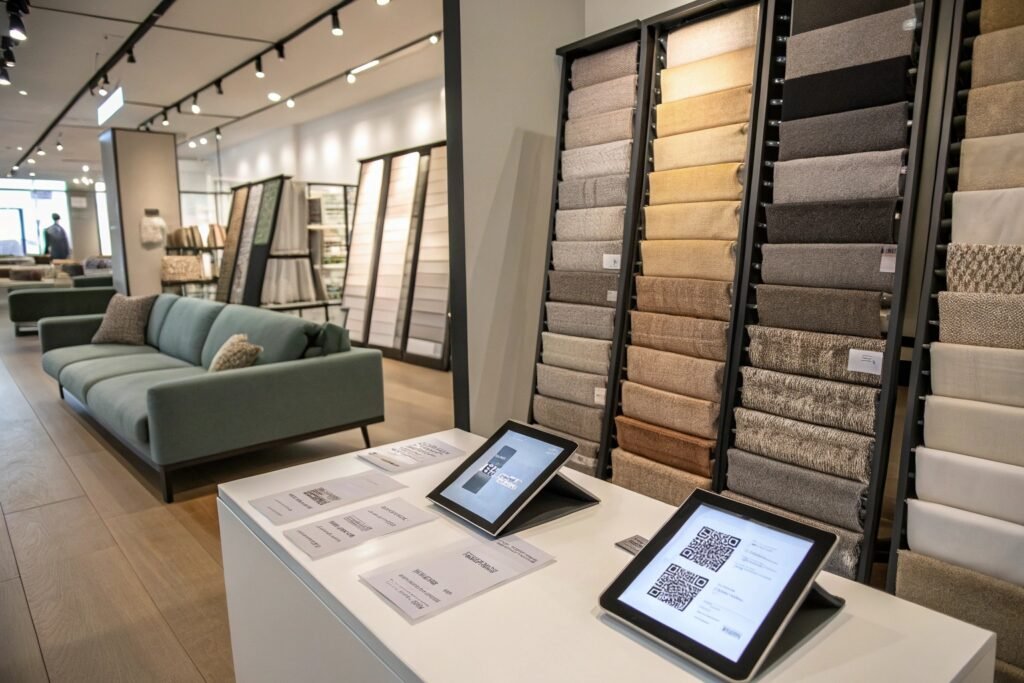
Which Suppliers Offer Verified Abrasion Data?
Look for suppliers like:
- Maharam – includes Martindale specs in product listings
- Kvadrat – provides downloadable abrasion test PDFs
- Fumao Fabric – offers QR code access to real-time Martindale data for upholstery orders
For bulk sourcing, platforms like Foursource allow filtering based on Martindale test scores and usage certifications.
How to Interpret a Fabric’s Technical Sheet?
A typical upholstery fabric spec sheet includes:
- Fiber composition
- Martindale abrasion cycles
- Pilling resistance
- Colorfastness to rubbing and light
Make sure the Martindale figure references ISO 12947 or ASTM D4966 standards. You can cross-check certifications on SGS’s Textile Testing Services page.
What Are the Alternatives to Martindale Testing?
While Martindale is the most common international method, it's not the only one. In North America, another standard often takes precedence.
The Wyzenbeek test is the US alternative to Martindale and uses a back-and-forth motion rather than circular abrasion. However, both aim to assess wear resistance over time.
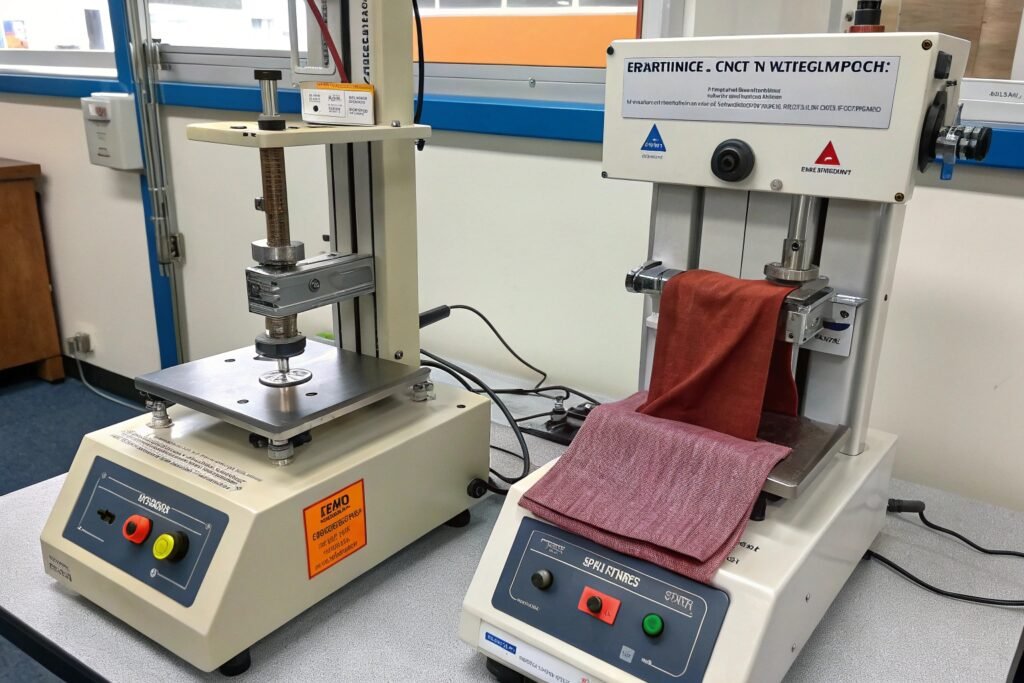
How Do Martindale and Wyzenbeek Tests Differ?
| Feature | Martindale | Wyzenbeek |
|---|---|---|
| Abrasion Method | Circular motion | Linear rubbing |
| Common Region | Europe/Asia | North America |
| Typical Uses | Contract upholstery | Commercial seating |
Each test measures wear differently, so their scores aren’t directly interchangeable. A 30,000 Wyzenbeek rating may correspond to a 50,000 Martindale score.
When Should You Choose One Over the Other?
If you're exporting to the US, request Wyzenbeek-tested fabrics. For EU markets, stick with Martindale. Some suppliers offer dual test reports for international coverage. You can view dual-tested fabrics at Carnegie Fabrics.
Conclusion
Martindale testing plays a vital role in the global upholstery fabric industry by providing objective, standardized abrasion data that empowers informed decisions. Whether you're furnishing homes, hotels, or public transport, knowing a fabric’s Martindale rating ensures longevity, safety, and customer satisfaction.
Don’t rely on looks alone. Always request testing data, understand its implications, and choose the right durability range for your specific project. It’s not just about how a fabric feels—it’s about how long it lasts.

